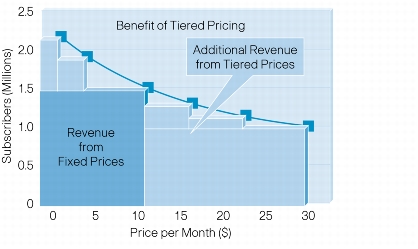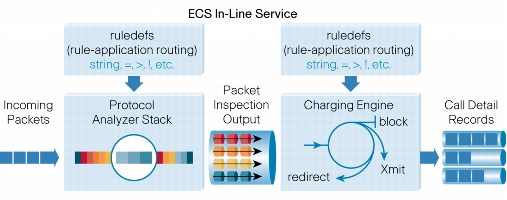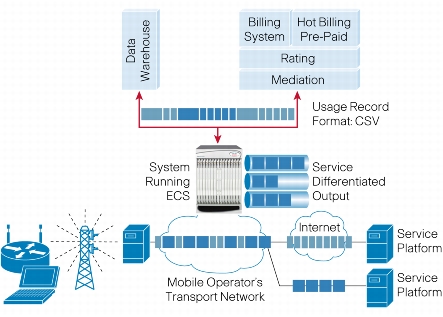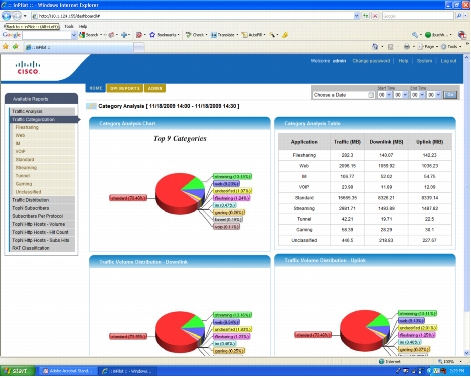The explosion of mobile data traffic is creating a financial burden for mobile operators as network costs outpace the growth in revenue. To maximize the return on your network investments, you will need to charge subscribers based on the content of specific services or other unique usage characteristics.
Figure 1. Tiered Billing Model (excerpt from TCO white paper)

Enhanced Charging Service
Figure 2. ECS In-line Service Processing

How It Works
Charging rules definitions can be based on the following:
• Duration and time of day - minutes used, peak/off-peak, in network/out-of-network
• Volume - packet amount, number of bytes, per destination
• Content - messaging, email, MP3, video or application download
• Event - quantity of file downloads or actual video streaming play time
• Destination - partner website, special offers
• Applications - video, VoIP, instant messaging
Key Features and Benefits
• ECS integrates with best-in-class solutions from third-party categorization providers
• Traffic analysis is performed with the use of shallow or deep packet inspection (including stateful inspection) to correlate packets with configured rules
• IP Re-addressing enables redirecting of unknown gateway traffic to known/trusted gateways
• HTTP Header Enrichment gives the ability to append subscriber information to HTTP header to be used by end application, such as mobile advertising insertion (MSISDN, IMSI, IP address, user-customizable)
• Credit control/quota reservation is provided for prepaid services
• ECS redirects subscriber to a top-up site if credit is exhausted
• Advice of charge and user notification redirect subscribers to information page when accessing high-value content
• Supports G-CDRs, eG-CDRs, EDRs, and UDRs for usage-data generation
• QoS optimization manages data rate of particular traffic to help ensure fair usage of bandwidth among subscribers
• In-line Services enable real-time charging with no risk of revenue leakage that may occur with out-of-band offerings
Figure 3. ECS Solution Overview

Unified Reporting
Report examples include:
• Real-time statistics per site, per category, and per subscriber, as well as global statistics
• Number of bytes/packets on a per-session/content-type/application basis
• The percentage of traffic (in bytes/packets) by a particular content-type, as compared to total traffic to and from the mobile node
• Data reported as a function of "on-net" and "off-net" traffic
• Report on any subscriber whose percentage of a particular application traffic (such as third-party voice or video) exceeds 30 percent of their total traffic in terms of bytes/packets
Figure 4. Granular Traffic Analysis with Unified Reporting

Table 1. Technical Specifications
For More Information
